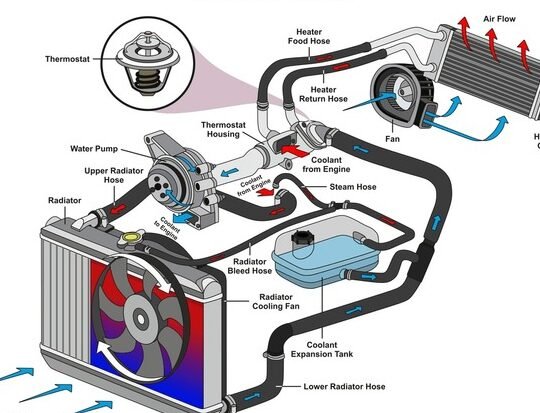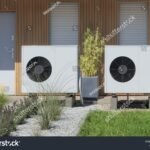Alternatives to Air Conditioning Window Units: Top Picks

As the summer heat intensifies, many of us start looking for ways to keep our homes cool and comfortable. Traditional air conditioning window units have been a popular choice for decades, but they come with their own set of drawbacks, such as blocking natural light, being noisy, and often not being the most energy-efficient option. Fortunately, there are several alternatives to air conditioning window units that can help you beat the heat without these downsides. In this comprehensive guide, we will explore the top picks for cooling your home, ranging from innovative technologies to simple, yet effective solutions.
- Ductless Mini-Split Systems
- Portable Air Conditioners
- Central Air Conditioning Systems
- Evaporative Coolers (Swamp Coolers)
- Ceiling Fans
- Floor Fans
- Tower Fans
- High-Velocity Air Conditioning Systems
- Geothermal Cooling Systems
- Whole House Fans
- Attic Fans
- Smart Home Climate Control Systems
- Heat Pumps
- Solar-Powered Air Conditioners
- Through-the-Wall Air Conditioners
- Personal Cooling Devices
- Natural Ventilation Strategies
- Insulation and Window Treatments to Reduce Heat Gain
- Passive Cooling Design
Ductless Mini-Split Systems
Ductless mini-split systems are one of the most efficient and versatile alternatives to air conditioning window units. These systems consist of an outdoor compressor/condenser and one or more indoor air-handling units, connected by a conduit. They are ideal for cooling specific rooms or zones within your home without the need for extensive ductwork. Mini-splits are known for their energy efficiency, quiet operation, and the ability to provide both cooling and heating. Installation is relatively straightforward, but it does require a professional to ensure proper setup and operation.
Portable Air Conditioners
Portable air conditioners are a flexible and easy-to-install option among the alternatives to air conditioning window units. These units can be moved from room to room and only require access to a window for the exhaust hose. While portable air conditioners are convenient, they can be less energy-efficient than other options and might not be suitable for cooling large spaces. However, for those living in apartments or homes where installing permanent fixtures is not an option, portable air conditioners can be a viable solution.
Central Air Conditioning Systems
For homeowners looking for a more comprehensive solution, central air conditioning systems are one of the most effective alternatives to air conditioning window units. These systems cool your entire home by circulating cool air through ducts and vents. Central air conditioners are highly efficient, can improve indoor air quality, and are virtually invisible, with the main unit located outside. The initial installation can be costly and requires professional assistance, but the investment can significantly increase your home's value and comfort.
Evaporative Coolers (Swamp Coolers)
Evaporative coolers, also known as swamp coolers, offer a natural and energy-efficient method among the alternatives to air conditioning window units. These devices cool the air by evaporating water, making them especially well-suited for hot, dry climates. Evaporative coolers are less expensive to install and operate than traditional air conditioners, but they do require a constant water supply and may not be as effective in humid conditions.
Ceiling Fans
Ceiling fans are a simple and cost-effective option when considering alternatives to air conditioning window units. While they do not lower the temperature of a room, ceiling fans circulate air, creating a cooling effect on the skin. They can be used in conjunction with other cooling methods to increase comfort and reduce energy costs. Ceiling fans come in various styles and sizes, making it easy to find an option that fits your home's decor.
Floor Fans
Similar to ceiling fans, floor fans are an accessible choice among alternatives to air conditioning window units. They are portable and can be placed strategically to maximize air circulation in a room. Floor fans are particularly useful for spot cooling and can be a great addition to rooms that tend to get warmer than others. They are also an affordable option for those on a tight budget.
Tower Fans
Tower fans are a sleek and modern option within the alternatives to air conditioning window units. These fans have a slim profile, making them ideal for small spaces. Tower fans often come with features such as multiple speed settings, oscillation, and remote control operation. While they work similarly to floor fans in circulating air, their design allows for a more uniform distribution of cool air throughout the room.
High-Velocity Air Conditioning Systems
High-velocity air conditioning systems are a unique and powerful option among the alternatives to air conditioning window units. These systems use small, flexible ducts that can be easily installed in existing homes without the need for major renovations. High-velocity systems deliver cool air at a high speed, quickly and efficiently lowering the temperature of a room. They are an excellent choice for older homes or buildings where traditional ductwork is not feasible.
Geothermal Cooling Systems
Geothermal cooling systems are one of the most sustainable and efficient alternatives to air conditioning window units. These systems utilize the stable temperature of the earth to cool your home. A series of pipes, buried underground, circulate a fluid that absorbs heat from your home and transfers it to the ground. Geothermal systems have a higher initial cost but offer significant savings on energy bills and have a long lifespan.
Whole House Fans
Whole house fans are an effective and natural method among the alternatives to air conditioning window units. Installed in the attic, these fans pull cool air through open windows and doors and exhaust hot air through the attic vents. Whole house fans are most effective in the evenings and early mornings when outdoor temperatures are cooler. They can significantly reduce the need for air conditioning by keeping your home comfortable through natural ventilation.
Attic Fans
Attic fans are a targeted solution within the alternatives to air conditioning window units designed to reduce heat buildup in your attic. By ventilating the attic, these fans help lower the overall temperature of your home, making it easier to cool. Attic fans are particularly useful in hot climates where attics can become extremely hot and increase the burden on your cooling system.
Smart Home Climate Control Systems
Smart home climate control systems represent the cutting edge in alternatives to air conditioning window units. These systems allow you to optimize the cooling and heating of your home using smart thermostats and other connected devices. You can control the temperature remotely, set schedules, and even use AI to learn your preferences and adjust settings accordingly. Smart home systems can improve comfort, convenience, and energy efficiency.
Heat Pumps
Heat pumps are a versatile option among the alternatives to air conditioning window units that can provide both cooling and heating. These systems transfer heat from the inside of your home to the outside during summer and reverse the process in winter. Heat pumps are known for their efficiency and can significantly reduce energy costs. They require professional installation and are best suited for moderate climates.
Solar-Powered Air Conditioners
Solar-powered air conditioners are an eco-friendly choice within the alternatives to air conditioning window units. These systems use solar panels to generate electricity, which powers the air conditioning unit. While the initial cost can be high, solar-powered air conditioners offer the potential for substantial energy savings and can even earn you tax credits and rebates. They are a sustainable option for those looking to reduce their carbon footprint.
Through-the-Wall Air Conditioners
Through-the-wall air conditioners are a more permanent solution among the alternatives to air conditioning window units. These units are installed in a sleeve through an exterior wall of your home. They do not obstruct windows and can be more aesthetically pleasing than window units. Through-the-wall air conditioners are similar in function to window units but offer a more secure and less obtrusive option.
Personal Cooling Devices
For individual cooling needs, personal cooling devices are a convenient option among the alternatives to air conditioning window units. These devices include wearable air conditioners, cooling vests, and personal fans. They are perfect for outdoor activities, office use, or any situation where traditional cooling methods are not feasible. Personal cooling devices are an innovative way to stay cool on the go.
Natural Ventilation Strategies
Natural ventilation strategies are a cost-effective and environmentally friendly choice among the alternatives to air conditioning window units. By strategically opening and closing windows, using window treatments, and taking advantage of natural breezes, you can cool your home without using any energy. Natural ventilation requires a good understanding of your local climate and weather patterns but can significantly reduce your reliance on mechanical cooling.
Insulation and Window Treatments to Reduce Heat Gain
Improving your home's insulation and using window treatments are effective ways to reduce heat gain, making them valuable alternatives to air conditioning window units. By preventing heat from entering your home, you can maintain cooler indoor temperatures and reduce the need for air conditioning. Options include reflective window films, insulated curtains, and upgrading your home's insulation. These measures can also improve your home's energy efficiency year-round.
Passive Cooling Design
Passive cooling design is an architectural approach among the alternatives to air conditioning window units that focuses on minimizing heat gain and maximizing natural cooling. Techniques include using shading devices, reflective roofs, and strategic window placement for cross-ventilation. Passive cooling design can significantly reduce the need for mechanical cooling, making it an ideal choice for new construction or major renovations.
There are numerous alternatives to air conditioning window units available, each with its own set of benefits and considerations. Whether you're looking for an energy-efficient system, a portable solution, or ways to utilize natural cooling, there's an option to suit your needs. By exploring these alternatives, you can find a cooling solution that keeps your home comfortable, reduces your environmental impact, and potentially saves you money on energy costs.





Leave a Reply